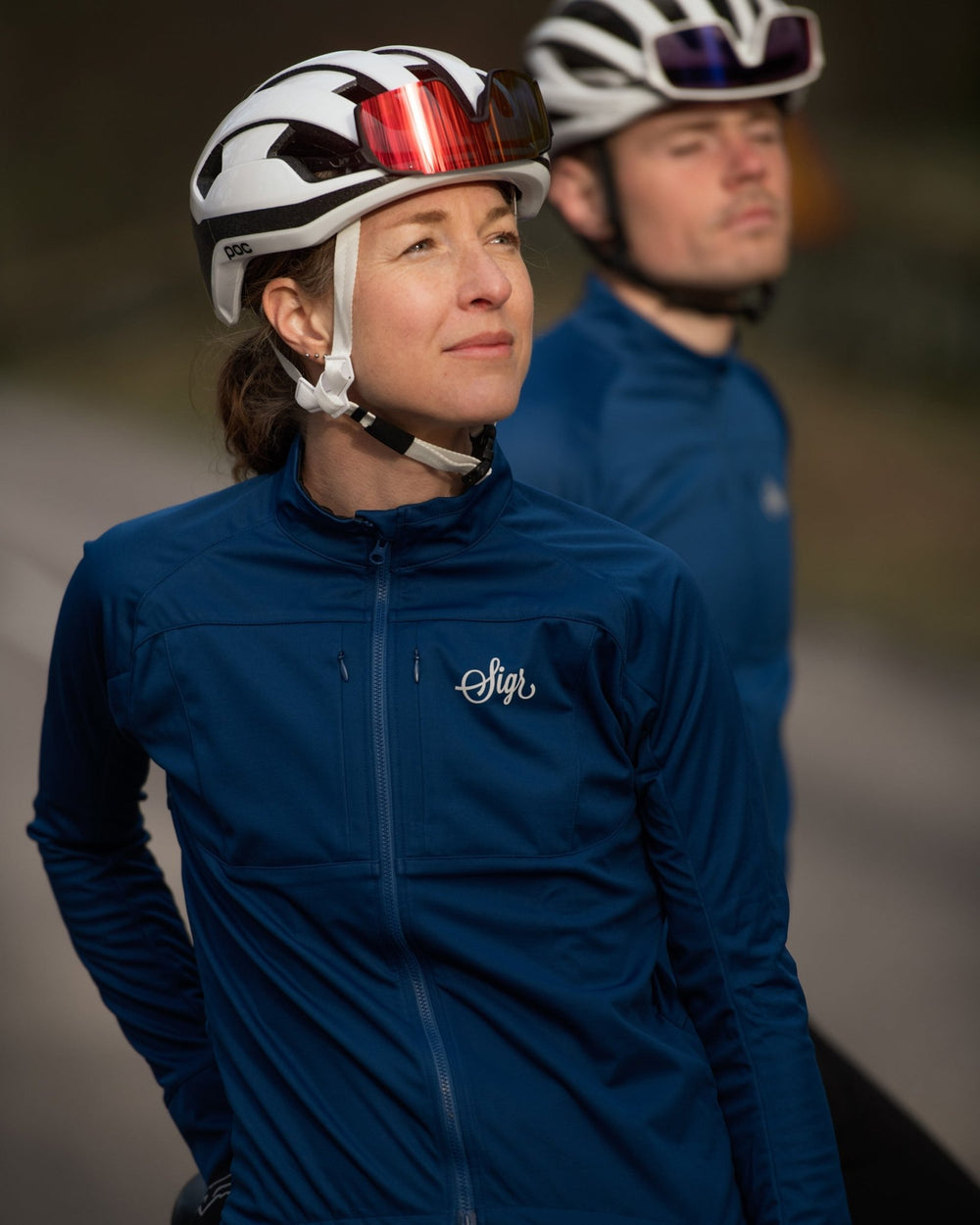Winter Base Training Tips to Kickstart the Spring Cycling Season: An Interview with Magnus Lagher of Velonavia
We recently interviewed Magnus Lagher, founder of Velonovia Gravel Series, to pick his brain about the importance of winter base training to kickstart the spring cycling season.
While some cyclists prefer the start of spring to ramp up the pedals, base training in the winter can avoid issues like tearing a muscle during an overly energetic early spring ride.
We can hear the giggles - every cyclist has been guilty of this!
During our interview, Magnus was open about his cycling goals for 2023 – none that were typical New Year’s Resolutions. We’re not big fans of those. We believe that cycling is a year-round lifestyle choice to stay healthy, build friendships, and do better for the environment.
Magnus is usually found riding long distances on the roads and trails around Sweden. It was great to catch up with him during the slower days of January.
Let’s dive in!
What happens when you don’t base train?
Base training is like building a house.
Without a proper foundation, you’ll have a wonky, crooked house. If your goals are just a couple of 60-minute rides every week during the summer, that's perfectly OK.
But if your goals include an -er, as in long-er or fast-er, lay down your foundation right.
What are three reasons why base training is essential for building a proper foundation?
Reason 1: Building in slower rides allows you to see places you may have passed without noticing them. But riding fast and strong also have a place, especially if you ride outside in wintry conditions, which can put you at risk of freezing if you slow down.
Reason 2: Training at the base level will improve fat metabolism and mitochondrial function and increase capillarization, all bizarre doctor’s lingo that means you’ll perform better without lactic acid buildup, such as the cramping in the legs. That also means that you can save energy for those sprints or hills.
Reason 3: You can avoid unnecessary injuries and over-training.
What are a few simple tips to start?
The great Eddy Merckx once said, “Ride as much or as little, or as long or as short as you feel. But ride.”
That is one accurate tip!
If you only remember one thing from all of this, it’s to ride.
Especially in January, not all of us are year-round cyclists. If your cycling season starts in April, every ride during the off-season is a plus!
Tip 1: Indoor training, turbo trainer or spin class!
Even though nothing beats riding outdoors, riding in January usually means 30 minutes for piling on multiple layers of clothes for a 120-minute ride, followed by 60 minutes for washing the bike and gear.
The indoors are efficient and convenient.
Tip 2: Don’t be afraid of strength training.
Resistance or bodyweight training is good for you, even if you’re an endurance athlete. And it will also make daily life easier.
Tip 3: LSD. Not the drug, obviously, but Long Slow Distance.
I like the Swedish term snack tempo or chat tempo - not a harder effort than you can easily chat with your fellow riders.
Tip 4: SST or Sweet Spot Training is slightly more intense than your max 60-minute effort but less challenging than a 20-minute one.
That sweet spot between tempo and threshold pace!
What are the benefits of each tip?
Benefit 1: The first rides of the season will feel much easier if you’ve ridden a few earlier.
Benefit 2: You’ll use the same bike indoors as you use outdoors. This is perfect for conditioning your body and getting a professional bike fit at your local shop.
Benefit 3: A strong core will help you on those long summer rides when your neck and back are aching. A good leg routine is also recommended to build a solid foundation.
Benefit 4: An endurance pace of 90-180 minutes gives your aerobic system a good workout.
Benefit 5: SST or Sweet Spot Training at a level just under threshold but above tempo has shown to be a time-efficient and highly effective base training method.
How many years have you been riding?
I´ve been riding my whole life racing with the kids around the block when I grew up, trying to be Bernt Johansson, one of the Fåglum Brothers. But seriously, I have more than 30 years of cycling with a purpose. I have also worked for more than 15 years as a fitness instructor and spinning coach.
What cycling and non-cycling sports have you participated in?
I’ve done cross-country and cross-country marathon mountain bike races, road races, and fondos. I’ve competed in adventure racing and running (sub 10 minutes for 3 km and 36 minutes for 10 km for cross-country running).
What sports are you participating in now?
Nowadays, my primary sport is cycling, preferably gravel riding and bikepacking. For example, I organize a five-event gravel series and multi-day bikepacking trips. But I also like skiing, albeit the weather doesn´t offer much of that now.
What does cycling mean to you?
Cycling is freedom for me - from everyday life and boredom. Besides, it´s a fantastic way to stay fit, explore places, and meet new people.
Do you have a mission for cycling?
To make cycling as accessible as possible.
Cycling is not a snobby sport.
Don’t let the terminology and complicated stuff scare you.
I want to show all willing to join me new roads, routes, and places they might have yet to go.
Do you have any current projects on which you are working?
Last year I launched a 300K bikepacking route in Kolmården. Now it is time to spread the word and have as many riders as possible exploring this gravel road route. And, of course, starting in March and ending in October, is the Velonavia Gravel Series.
Where can people find you?
I’m on Instagram and Facebook at @velonavia and at velonaviablog.wordpress.com.



















Leave a comment